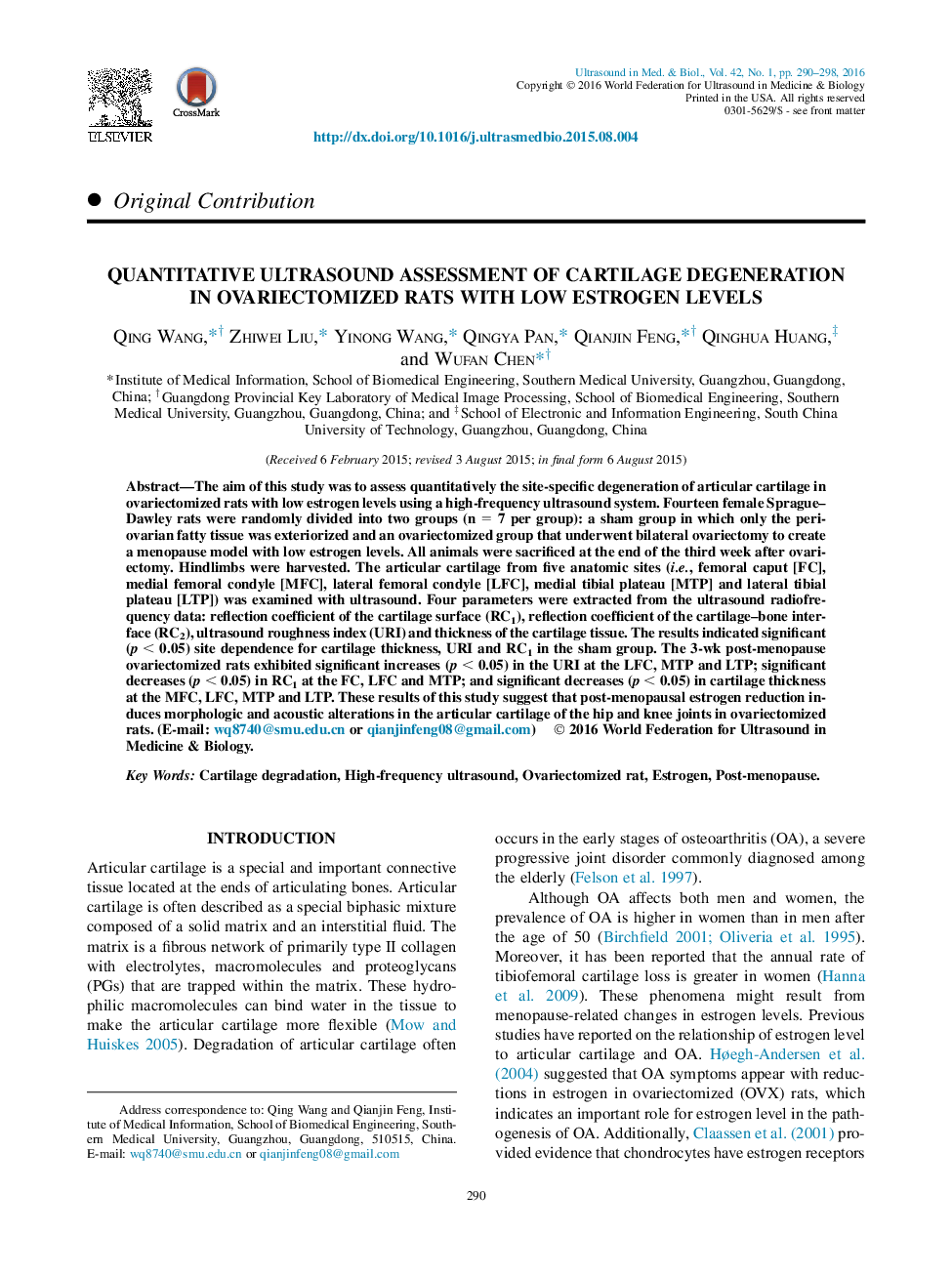| Article ID | Journal | Published Year | Pages | File Type |
|---|---|---|---|---|
| 10691126 | Ultrasound in Medicine & Biology | 2016 | 9 Pages |
Abstract
The aim of this study was to assess quantitatively the site-specific degeneration of articular cartilage in ovariectomized rats with low estrogen levels using a high-frequency ultrasound system. Fourteen female Sprague-Dawley rats were randomly divided into two groups (n = 7 per group): a sham group in which only the peri-ovarian fatty tissue was exteriorized and an ovariectomized group that underwent bilateral ovariectomy to create a menopause model with low estrogen levels. All animals were sacrificed at the end of the third week after ovariectomy. Hindlimbs were harvested. The articular cartilage from five anatomic sites (i.e., femoral caput [FC], medial femoral condyle [MFC], lateral femoral condyle [LFC], medial tibial plateau [MTP] and lateral tibial plateau [LTP]) was examined with ultrasound. Four parameters were extracted from the ultrasound radiofrequency data: reflection coefficient of the cartilage surface (RC1), reflection coefficient of the cartilage-bone interface (RC2), ultrasound roughness index (URI) and thickness of the cartilage tissue. The results indicated significant (p < 0.05) site dependence for cartilage thickness, URI and RC1 in the sham group. The 3-wk post-menopause ovariectomized rats exhibited significant increases (p < 0.05) in the URI at the LFC, MTP and LTP; significant decreases (p < 0.05) in RC1 at the FC, LFC and MTP; and significant decreases (p < 0.05) in cartilage thickness at the MFC, LFC, MTP and LTP. These results of this study suggest that post-menopausal estrogen reduction induces morphologic and acoustic alterations in the articular cartilage of the hip and knee joints in ovariectomized rats.
Related Topics
Physical Sciences and Engineering
Physics and Astronomy
Acoustics and Ultrasonics
Authors
Qing Wang, Zhiwei Liu, Yinong Wang, Qingya Pan, Qianjin Feng, Qinghua Huang, Wufan Chen,
